httpv://www.youtube.com/watch?v=pyfKD68lx7s
video credit: Ralph Laurino
MY FIRST ASSOCIATION WITH SRILA PRABHUPADA
by Nityananda das
By my last year of high school, although I had been an honor student and had been accepted to college, I had become a hardcore cynic, uninterested in adopting the social norms and typical goals of material life. The idea of becoming like those I saw around me was disgusting. Unconsciously at first, then gradually with more determination and focus, I began the search for alternative purposes of life. All those around me seemed lost and blind- I was appalled at the futility of their goals, obvious to me if not them. Of course, the materialistic business of sense gratification was ever-present and had captured me thoroughly. As a very rebellious teenager, I essentially became independent of my parent’s influence by the age of sixteen.
Near my home in Rochester, NY lived Paul Scurvin, who had dropped out of high school, had shoulder length hair, and stayed mostly in New York City’s Lower East Side. He aroused my curiosity about alternative lifestyles. In early 1967 I traveled with friends to New York City, and several times we spent a few days in the East Village and the Lower East Side, drifting along St. Mark’s Place, attending rock concerts at the Fillmore East, and trying to make connections into the new hippy scene. Little did I know that my penultimate spiritual guide was just around the corner, establishing a worldwide spiritual movement. Unfortunately saw no sign of the devotees or Srila Prabhupada at the first center of the Hare Krishna Movement at 26 Second Avenue. The time for my being bestowed with the blessings of meeting Srila Prabhupada and his mission would come soon, however.
In the fall of 1967 I began college at the State University of New York at Buffalo (SUNYAB), and the most important event of my freshman year was listening to a discussion about the reality of pending death. Realizing I did not want to die, I wondered why it was necessary. Thereafter I became very interested in yoga, meditation, change of consciousness, which initially I thought would be found in the rising counter culture of the hippies.
In December of 1967 I went with friends to New York City in a VW bus. We sauntered around the “Village,” visited someone’s apartment, and still did not encounter any devotees. However, around this time we became aware of a small Hare Krishna temple near campus that some acquaintances sometimes frequented.
One night I listened to two friends, Bruce and Ed, discussing whether one required a spiritual master to successfully become enlightened. As I learned later, Ed had visited the devotees at their temple and was meticulously repeating the philosophical arguments he had heard there, while Bruce proposed that one needed to find his way to enlightenment on his own without help from others. I was very captivated by this discussion, as Ed’s reasoning was rational and sound. Only one who has seen the truth can reveal it. Only one above the defects of conditioned life can be trusted to show the way. Perfect knowledge only descends via the bonafide disciplic succession of realized teachers… Indirectly Srila Prabhupada had spoken to me about the need for a bonafide guru, the message passed via Rupanuga and Ed. This started my search for my spiritual master.
Thereafter, I became increasingly interested in yoga, mantras, meditation, cosmic consciousness, enlightenment, and the search for my spiritual master. Of course, I was heavily influenced by the prevailing college wisdom of the supposed benefits of psychedelics. Books, organizations, programs, and all sources of information on these topics were of keen interest to me. I read “This Is It” by Alan Watts and Herman Hesse’s “Siddhartha,” and, of course, “Autobiography of a Yogi.” These three books only served to increase my interest in transcendence.
By my second year of college I still had no idea what I would do with my life and was completely blank as to what study major I would choose. There was great pressure to choose my life’s vocation, whether doctor, scientist, architect, whatever. I had sampled beginning courses in every department from psychology, philosophy, history, sociology, political science, anthropology, literature, chemistry, and more. But I found nothing that gave any higher meaning to me. The drug culture was prevalent, but I could not participate much in it due to my first and last LSD experience being a very bad one, seriously irritating my nervous system. Supposedly it had been overly tainted with strychnine. While friends dived into hallucinogens, heroin, stimulants, downers, methamphetamines, THC, hashish, psilocybin, mescaline, etc, I was shielded from the most of it by my lone bad trip. Anything, even the dark, would arouse deep fear of hallucinations, chaos and loss of reality. I was constantly pressured to join in the drug taking, but could not.
My first contact with the Hare Krishna mantra was when I found it on a bumper sticker for sale in a gift shop across from the campus. The mantra’s foreign language was a mystery to me, compelling me to ask the store owner what it was, but he had no answer. Around this time I vaguely remember devotees with shaved heads and robes and Back to Godhead magazines on campus in 1968, but I avoided them because they seemed to have the same distasteful fervor of the Christians. Sometimes I would see them sitting outside in the main campus courtyard, chanting with drums and cymbals, but I would quickly rush past them. Although curious of the chant, I feared an uncomfortable confrontation with dogmatism and evangelic preaching.
One March evening in 1968 Allen Ginsberg came to the Student Union for a mantra meditation program. He was on a national college tour that also included Ohio University in Columbus, Ohio where he chanted with the Hare Krishnas. Coming late after 8 pm, I had missed Ginsberg’s vulgar poetry readings, was in time for his chanting of various Indian and Vedic mantras. The hall was packed full and very dark except for a lighted stage. Next to Ginsberg sat another man, clean cut with a sport jacket and a large long red strand of beads slung several times around his neck. This was Rupanuga das, which I learned later was head of the local Hare Krishna temple. He actually inspired me more than Ginsberg, as he played some brass hand cymbals along with Ginsberg’s small hand-pumped harmonium, rocking back and forth very erect, with closed eyes and in deep concentration on the chanting. He looked like a modern academic Buddhist or something, with some very powerful beads.
A sheet had been circulated with about 25 mantras Ginsberg chanted, one after another, each one for a while. Most of the chants were dry and difficult for me, however “Govinda Jaya Jaya” and “Hare Krishna, Hare Rama” were chanted for much longer and elicited strong enthusiasm and participation from the audience, resounding sweetly and melodiously throughout the hall. Thus I was introduced to congregational chanting of the Hare Krishna mantra for the first time. Later I would learn that Srila Prabhupada had requested Ginsberg to chant the Maha Mantra at all of his programs, which Ginsberg was quite happy to do. Srila Prabhupada had brought the Holy Names to me, and soon He would come Himself as well.
Richard Alpert, alias Baba Ram Das, a former professor associate of Timothy Leary, also visited our university around this time. Renouncing LSD, he had gone to India, found a guru, and taken up the chanting of Jaya Ram, Sri Ram, Jaya Jaya Ram. He did a program on campus and greatly bedazzled me and Loren with his story of searching the Himalayas for his guru and how the chanting had changed his consciousness, bringing peace and spiritual realization. For the first time I truly enjoyed the Lord’s names as he chanted for an hour, long hair and robes swaying as he pumped his harmonium. Loren went to his New Hampshire ashram for a week; I was too self conscious to go with him.
The advent of 1969 saw the peace-love and hippie subculture in full swing. In early January I had signed up for several exotic and novel credit courses being offered in what was termed the “Experimental College Program.” One course was “The Blues,” where about fifty of the most fringed students simply listened to and discussed that genre of music. There were six courses available and I had signed up for three, all being on a pass/fail basis, guaranteeing an easy nine college credits. As long as you showed, there would be no failures.
The most interesting course was “Transcendental Meditation: An Introduction to Vedic Literature,” for which I was convinced to register by my best friend Loren Fogel (later Narottamananda das). No availability was the result on my procrastination, but I returned to the room every hour on the last day of registration to check for any cancellations. Krishna was kind- I was secured the last opening amongst a class of sixty. While Rupanuga taught from Srila Prabhupada’s first blue McMillan abridged Bhagavad Gita, which I begrudged having to purchase for five dollars, I sat in the very back hiding behind chairs to read books like Aldous Huxley’s “Island” and “Brave New World.” A poster of Govinda playing flute under the moonlight by the Yamuna with His cows was put up for each class, which began by chanting Hare Krishna, then reading and discussing the Gita, another kirtan, and finally some diced apples and raisins prasadam were passed around.
Rupanuga’s class attracted a lot of outside auditing students who heard of the very progressive and appealing nature of the course program. Stubbornly, I refused to get drawn into the discussions and although present for a minimum number of sessions, ignored the proceedings while I read my various books of nonsense. Loren was always bubbling with excitement and philosophical debate and recounted his adventures encountered while visiting the local Krishna temple. I refused to go with him, being very self conscious and not knowing how I would be expected to act. Still, despite my disinterest, I was being exposed day in and day out to hearing about the temple, devotees, their philosophy, and their spiritual master. None of it really made much of an impression, but gradually I was becoming purified enough to appreciate Krishna consciousness.
The first time I remember making contact with Srila Prabhupada was with His photograph. One day I saw and studied several black and white announcement posters around campus with a large portrait of Srila Prabhupada which simply said: “PRABHUPADA’S COMING ! April 18, 3:30 pm, Millard Fillmore Room, Student Union, SUNYAB” Later I heard that Srila Prabhupada liked this photo very much, which showed His long ear hairs like transcendental antennas, and which He said portrayed Him as a grave philosopher. I was disappointed that there was no topic listed for the occasion, nor any explanation of who Srila Prabhupada was. I was put off by the apparent dogmatism involved, and it reminded me of Christians’ Second Coming. My impression of devotees had not been helped by one particularly geeky and enthusiastic Hare Krishna I used to see every so often on campus. As such, I made no plans to attend the program.
After classes on April 18 I was again drifting around the student union to find something interesting going on. I went to the bookstore and checked for any new yoga or Eastern philosophy books. I checked the bulletin board and roamed all four floors, including the Rathskeller cafeteria in the basement, hoping for some political debate over the Vietnam war, an SDS meeting, or an art exhibit. Around three I peeked into the Millard Fillmore Room, and was surprised that hundreds of students were waiting for Srila Prabhupada, all sitting on the empty floor with chairs shoved aside, and talking in subdued tones. A low and wide stage against one wall held a large seat and a microphone. Some students were practicing their Hathayoga and lotus positions. The scene was attractive, so I entered, thinking I might be wrong about missing this event after all.
I found my friend Loren in the very front, and took a seat. After some time, suddenly Srila Prabhupada was at the door, moving adeptly and swiftly through the crowd of waiting students. There was no clear passageway yet Srila Prabhupada passed through with no effort, as though floating. I still recall being struck at how Srila Prabhupada, in His long overcoat and orange aviator cap, made it to the stage so easily despite the congestion. It was mysterious how Srila Prabhupada moved, gliding effortlessly through the crowd- anyone else would have had to zigzag and pick their way slowly in between the packed students who all were facing the stage and thus did not notice Prabhupada nor move aside for him. This was the first time I saw Srila Prabhupada, and the sight has never left my mind.
Srila Prabhupada situated Himself on the large seat, He requested His kartals, and a few swaying devotees joined Him in a chanting session which He led over the microphone. Four year old Ekendra, Rupanuga’s son, raised his arms high and danced very nicely, with some students and sympathizers in front joining in. Most, including myself, simply observed. Not being able to appreciate the kirtan meditation, I became impatient for the lecture to begin, as I really wanted to hear what Prabhupada’s message would be.
But when the lecture began, and even though I strained hard in concentration, I could not understand the words due to Srila Prabhupada’s thick accent, as well as my own dullness. I could tell He was speaking in English, and finally heard one word repeated several times: “consciousness.” I wanted badly to hear the message about consciousness, a term I had contemplated often in discussions and readings. But my own cloudyconsciousness could not catch on to the pronunciations, and I grew a little frustrated and restless.
Gradually students began to leave, apparently uninterested in the lecture, and the crowd thinned. The constant stream of exiting students became embarrassing, and soon only a few students remained, one of which was the future Gunagrahi Swami who had fallen asleep on his back with feet pointing at Srila Prabhupada. Another student also went to sleep on his back, both lying directly under Prabhupada’s seat. I expected Srila Prabhupada to react, maybe become insulted by the rudeness of the departing students, and to react in anger, but instead He continued speaking deliberately and indifferently, apparently unaffected.
Checking my watch, it was almost five, and I also rose and left, thinking of the cafeteria and my stomach. Outside, I thought about Loren who had remained and seemed fixed on the program, and that I should have stayed. I felt that I had made a mistake. My constant mental anxiety was responsible for my flightiness, and I have regretted my premature departure from the Millard Fillmore Room that afternoon ever since. How could I walk away from the company of the pure devotee, the ambassador of the Supreme Person? -only out of abject ignorance. Now, what I would do for just a minute with Srila Prabhupad !
The next day Loren asked why I had left, and I replied that I was bored. He emphasized that the balance of the program had been the best part, with questions and answers and another kirtan. I felt bad. Loren’s interest in the Hare Krishnas increased from this point, and he told me in detail how he had gone to Rupanuga’s apartment with devotees for a darshan with Prabhupada. Again I felt bad, but I was too shy to go. Nevertheless, I had gotten to see and hear from a self realized soul and some auspicious and subtle transformations were taking place deep inside my person. Within a few months I would move into the temple, even before Loren did!
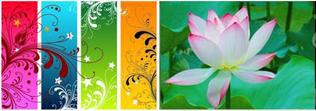
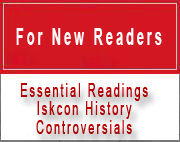
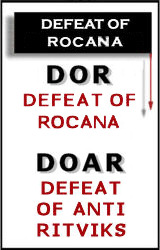
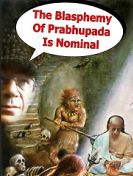
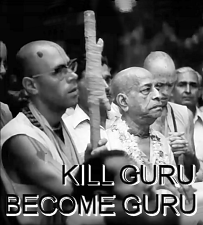
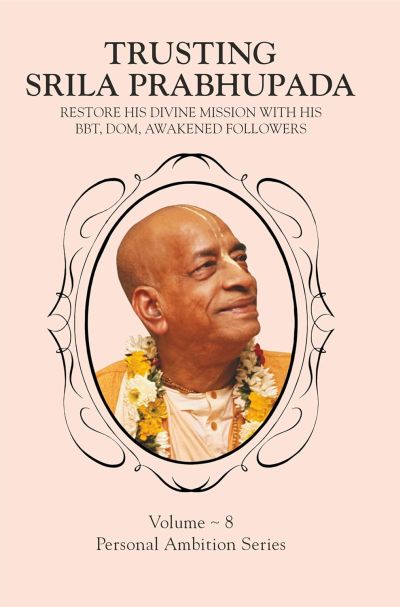
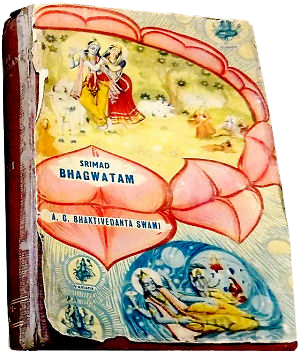
Speak Your Mind